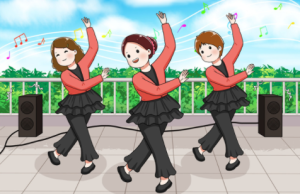Square Dancing: A Celebration of Community, Not a Cause for Condemnation
- 广场舞百科
- 2024-04-07 02:18:21
- 68
Content:

Square dancing has become an integral part of urban life in recent years. Every evening, in parks and squares across cities, we witness groups of people gathered to dance to the rhythm of music. While this cultural phenomenon has brought joy and vitality to many, it has also sparked debates and controversies, especially concerning noise disturbances. The question, "Should square dancing be forbidden?" is a subject of heated discussions. However, I strongly believe that square dancing should not be banned; instead, it should be celebrated and managed effectively.
Firstly, square dancing offers numerous health benefits. In today's fast-paced world, where sedentary lifestyles have become the norm, square dancing provides an excellent opportunity for people to engage in physical activity. It is a fun and interactive way to exercise, helping to improve cardiovascular fitness, coordination, and flexibility. Moreover, dancing has positive psychological effects, reducing stress and boosting mood. Banning square dancing would take away this valuable exercise option from many, especially the elderly, who find it an enjoyable way to stay active and socialize.
Secondly, square dancing fosters a sense of community and social cohesion. It brings people of different backgrounds, ages, and cultures together, creating a shared space for interaction and camaraderie. In a world where technology often hinders face-to-face communication, square dancing offers a platform for building real connections. It encourages social inclusion, reducing loneliness and isolation, particularly among older *** s. Banning this activity would deprive communities of this valuable opportunity for bonding and social engagement.
Furthermore, square dancing contributes to the cultural enrichment of our society. It is a reflection of our cultural heritage and diversity, showcasing traditional dances and music. By participating in square dancing, people not only enjoy physical exercise but also learn about and appreciate different cultures. This cultural exchange is essential for building a harmonious and inclusive society.
While it is true that the loud music accompanying square dancing can be a nuisance to nearby residents, this issue can be addressed through proper management and regulation. Instead of completely banning square dancing, authorities can implement measures such as setting specific time slots and volume limits for dancing sessions. This approach ensures that dancers can continue to enjoy their activity while respecting the rights of nearby residents to peace and quiet.
In conclusion, square dancing should not be forbidden. It offers immense health, social, and cultural benefits to individuals and communities. Instead of viewing it as a problem, we should recognize its value and work towards managing it effectively. By doing so, we can ensure that square dancing remains a vibrant and cherished aspect of our society, uniting people in celebration and joy. Let us not forget that the essence of square dancing lies in its ability to bring people together, fostering a sense of unity and togetherness that is essential for a thriving community.
免责声明:本网站上的所有文章内容均来自互联网。本网站仅在法律允许的范围内使用、分享和传播这些内容,不违反任何版权或知识产权法。如发现本站有涉嫌抄袭侵权/违法违规的内容,请发送邮件25538@qq.com举报,一经查实,本站将立刻删除。
本文链接:https://www.zhuangrou.com/gcw/7992.html



















